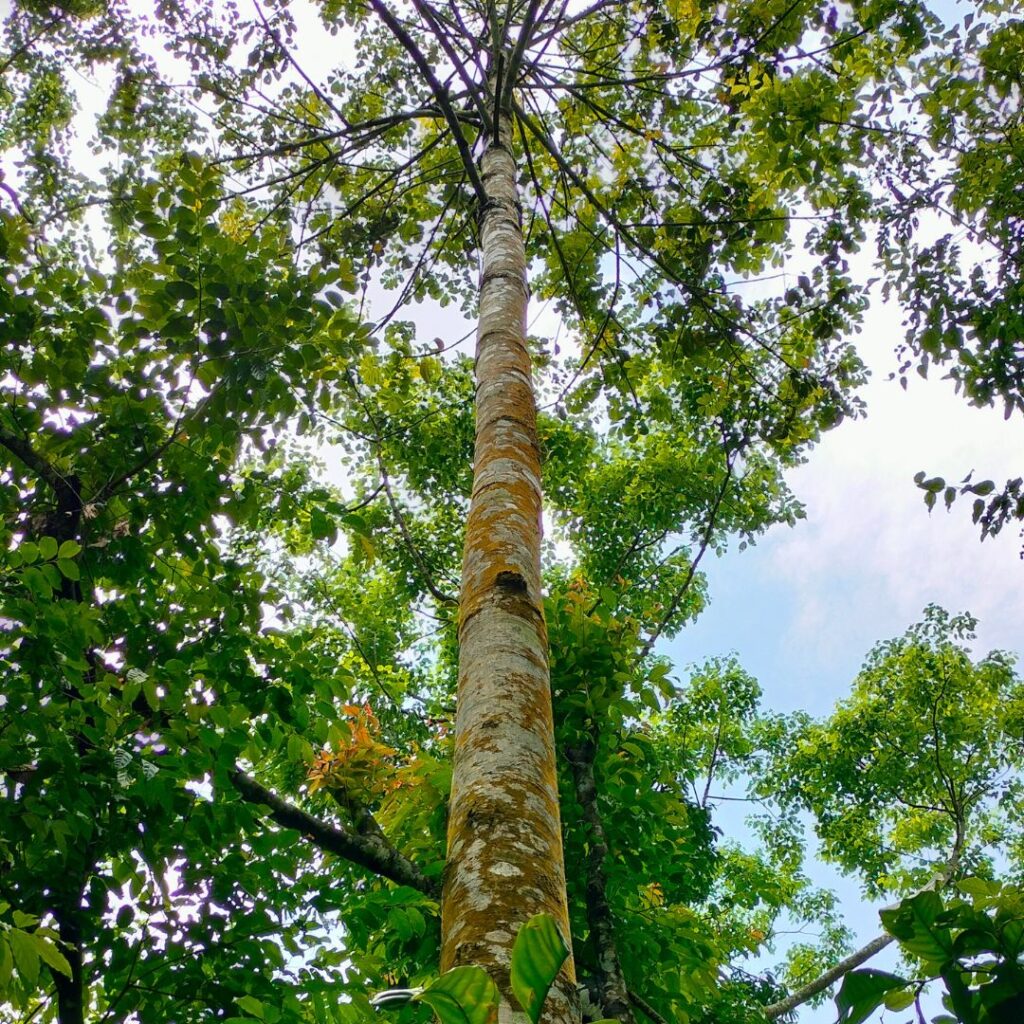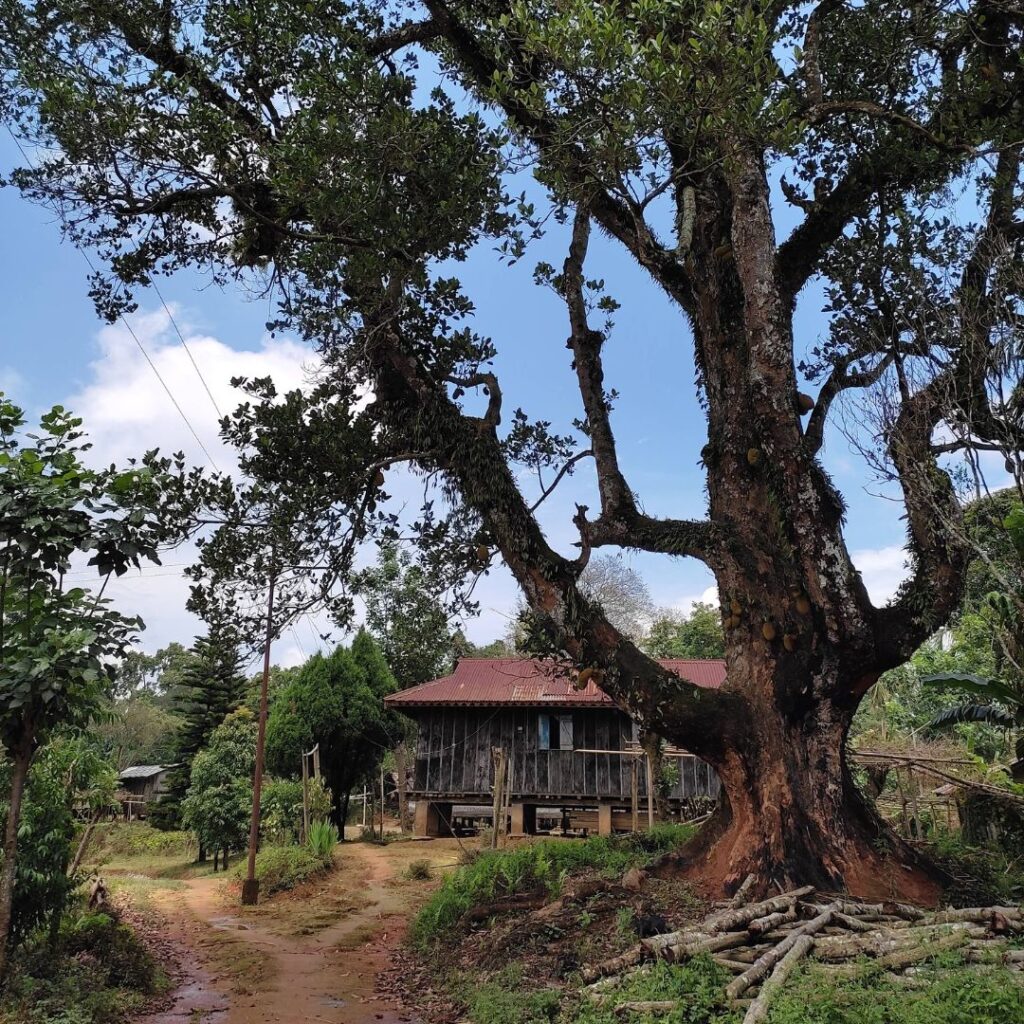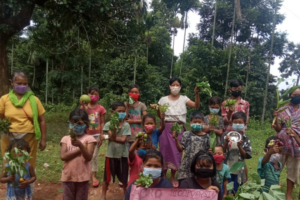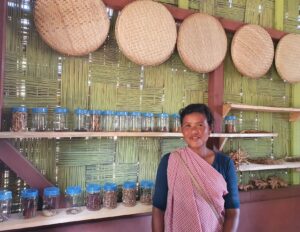Sasatgre in West Garo Hills is an active participating partner village of NESFAS. The village of Sasatgre, erstwhile Rongdikgre, has an interesting story to its name.
The word Sasat is derived from the Sasat tree which was found abundantly in the area in days of yore. The Sasat tree holds an important place in the Garo tradition and culture but very little is known and even lesser has been documented about this tree, ironically. According to the Garo cosmology, the Sasat tree has been believed to be the first tree to have been planted.

During the period of British colonization, the name of the village was changed from Rongdikgre to what we now know as Sasatgre. Some of the eminent forefathers of Sasatgre worth mentioning are as follows- Kilpang Watrepa, Turam Rengjipa, Sanon Rechipa, Sengran Solmepa, Gurang Nagompa.
The “Songsareks” or the Garos of indigenous faith were nomads once upon a time and whenever they moved place to place in search of settlement, they would take the sap of the Sasat tree with them, and would also settle down only in areas where the Sasat tree could be found. The sap of the Sasat tree and the beheaded heads of their enemies were prized possessions that the Garos never left without when looking for new places.
Harvesting is an important aspect of the traditional Garo way of life. They worship the God of harvest, Misi Saljong and hold him in high esteem. The pre-cultivation season has unique traditional rituals to start with and the harvest season is when most of the festivities take place. It is during the harvest season that Garos perform the Wangala dance. The dried sap of the Sasat tree is burnt by the priest who performs rituals for the harvest of God. They believe that the smoke of the burnt Sasat sap decides the fate of the next harvest year. If the smoke is directly in an upward direction, they consider it as a bad omen, and if the smoke swirls around, fills the room and rises up, they consider it as a good omen. Thereafter they perform the Wangala dance and drink and make merry, decked in their traditional attire.

The non-Garos use the dried sap of the Sasat as a repellent for insects, the sap collected can also be sold for a good price. It is also used in a mixture with other ingredients to treat stomach ailments.
As of now, there is only one Sasat tree in the entire Sasatgre. There were a lot of those trees in olden days, but with the practice of Jhum cultivation, they cut down many trees to make way for planting crops, and the remaining ones did not survive the smoke from the fire that burned down the land for cultivation, as the Sasat trees are highly sensitive and cannot withstand smoke. The Sasat tree is difficult to propagate, next to nothing is known about the propagation of this important tree. Many people who found the saplings have tried to grow it in their land unsuccessfully.

With the rise of civilization and the advent of Christianity in Garo Hills, the population of the Sasat tree declined drastically and hence, it is now a highly endangered species. There are only a few Sasat trees left in the entire Garo Hills, some scattered in Mandalgre in East Garo Hills, and some in the foothills of the Ranggira range.
The village of Sasatgre, meanwhile, is progressing in every aspect- education and literacy, agriculture, apiculture, entrepreneurship and the like. The place is also booming in terms of tourism and is currently a hotspot for tourists, both local and international. Thousands of people flock there every year to enjoy the mesmerising view from Sakal Aduma. The village also operates homestays where one can camp for a night or two, have traditional cuisine, explore the rich culture of the Garos, and take a break from busy life amidst the lush greens and serene blues. There are orange orchards which are in full glory during the fruiting season, adding to the beauty of the majestic scenery. Thousands of trees are filled with thousands of the juiciest ripe oranges, hanging like a thousand light bulb decorations. However, little to no attention is paid to the Sasat tree, which remains neglected in a forsaken corner in the village. At this rate, it will not be long before the Sasat tree vanishes altogether and the name of the village of Sasatgre loses its essence.
Sasatgre community is an active village of the NESFAS’ project “Empowering Indigenous Communities through Agroecology Learning Circles (ALCs) for resilient, integrated and innovative natural resource management”, which is supported by MBMA and funded by the World Bank.



